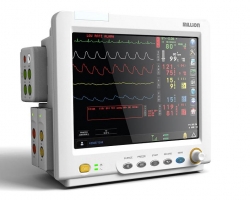Wechat QR code

TEL:400-654-1200

TEL:400-654-1200

Monitor manufacturers tell you
A: The fetal monitor can fully reflect the objective indicators of contractions, such as contraction intensity, frequency and duration of each contraction, but also to understand the relationship between fetal heart rate, fetal heart rate variation and uterine contractions. Therefore, early detection of fetal intrauterine distress can be performed and timely and effective rescue treatment can be performed.
Monitor manufacturers
What are the characteristics of external fetal monitoring?
A: The external electronic monitoring is applicable to the unruptured fetal membrane. When the cervix is not opened, it is the most commonly used clinically.
What are the characteristics of fetal electronic monitoring?
A: The internal electronic monitoring, also known as intrauterine monitoring, is applicable to the rupture of the fetal membrane. After the cervical dilatation of 3cm, the result of internal electronic monitoring is more accurate, but it has the disadvantage of causing intrauterine infection.
What are the methods of using fetal heart monitoring to predict fetal intrauterine reserve?
A: Predicting fetal intrauterine reserve includes stress-free trials, contraction stress tests, and oxytocin challenge tests.

What is a stressless test (NsT?
A: NST is used to observe fetal heart rate variability and fetal heart rate after fetal movement. Under normal circumstances, at least 3 fetal movements with fetal heart rate acceleration of more than 15 beats/min are said to respond within 20 minutes. If less than 3 times or the fetal heart rate is less than 15 beats per minute, the test time should be prolonged to 40 minutes if the NST is not responding. If there is still no response and the gestational age is greater than 36 weeks, an oxytocin challenge test should be performed again. .
What is a contraction stress test (csT?
A: Tocolytic stress test (placental transient hypoxemia stress test caused by CST through uterine contraction and test of fetal reserve capacity. After birth, successive delineation of the official contraction and fetal heart rate for 10 minutes as the base, if there is no contraction Intravenous instillation of small doses of oxytocin causes the uterus to contract regularly, with each contraction for 30 seconds, followed by at least 3 consecutive contractions to determine the outcome.
How to perform oxytocin stimulation test (ocT?
A: Observing pregnant women after 10 minutes of no official reduction, given diluted oxytocin (12000 intravenous drip. The drip rate began from 8 drops / min, gradually increased, adjusted to effective contractions 3 times / 10 minutes after the monitoring.